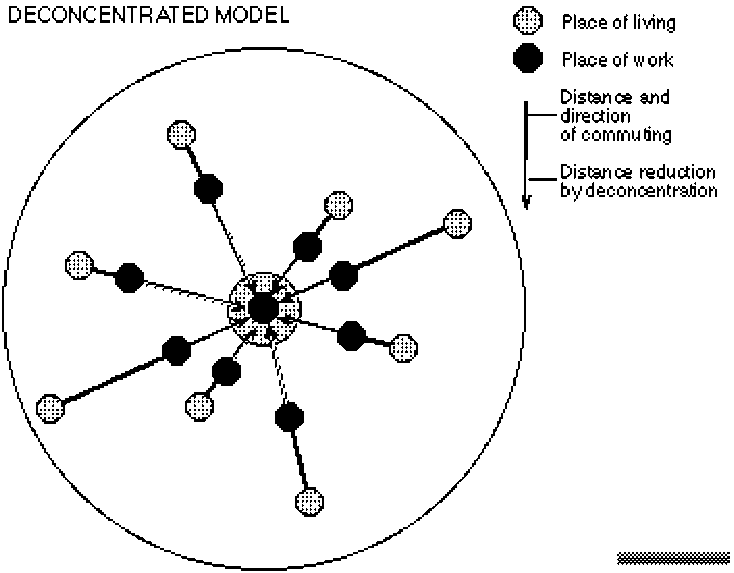4.
The model of deconcentrated employment
The calculation of the distance between place of residence and employment location in the
concentrated model is based on a number of assumptions regarding household behaviour and
the direction of commuting. On further development of the model, although allowing some
degree of deconcentration of employment, these assumptions are maintained. The rational
commuter, however, will change either his place of residence or employment in order to
minimize the aggregated costs of commuting. Thus, deconcentration of employment may
lead to a reduction of the total commuter distance because now employment is nearer to the
place of residence. In the deconcentrated model it is assumed that the employment location
can be found on the radial between the place of residence and the centre. This is represented
in figure 3.
Figure 3 The reduction of commuting distances through deconcentration of
employment

For the calculating the reduction in distance in the case of deconcentration of employment, it
is once again Hamilton (1982) that we follow. The reduction concerns the distance to the
new, deconcentrated employment location. Suppose that, in case of full concentration of
employment, a commuter travels 10 kilometers between the place of residence and the
employment location, which is the city centre (see figure 3). In case of employment
10
More intriguing information
1. Putting Globalization and Concentration in the Agri-food Sector into Context2. AN ECONOMIC EVALUATION OF COTTON AND PEANUT RESEARCH IN SOUTHEASTERN UNITED STATES
3. The name is absent
4. Herman Melville and the Problem of Evil
5. Short report "About a rare cause of primary hyperparathyroidism"
6. ¿Por qué se privatizan servicios en los municipios (pequeños)? Evidencia empírica sobre residuos sólidos y agua.
7. Rural-Urban Economic Disparities among China’s Elderly
8. Education as a Moral Concept
9. Imitation in location choice
10. Beyond Networks? A brief response to ‘Which networks matter in education governance?’